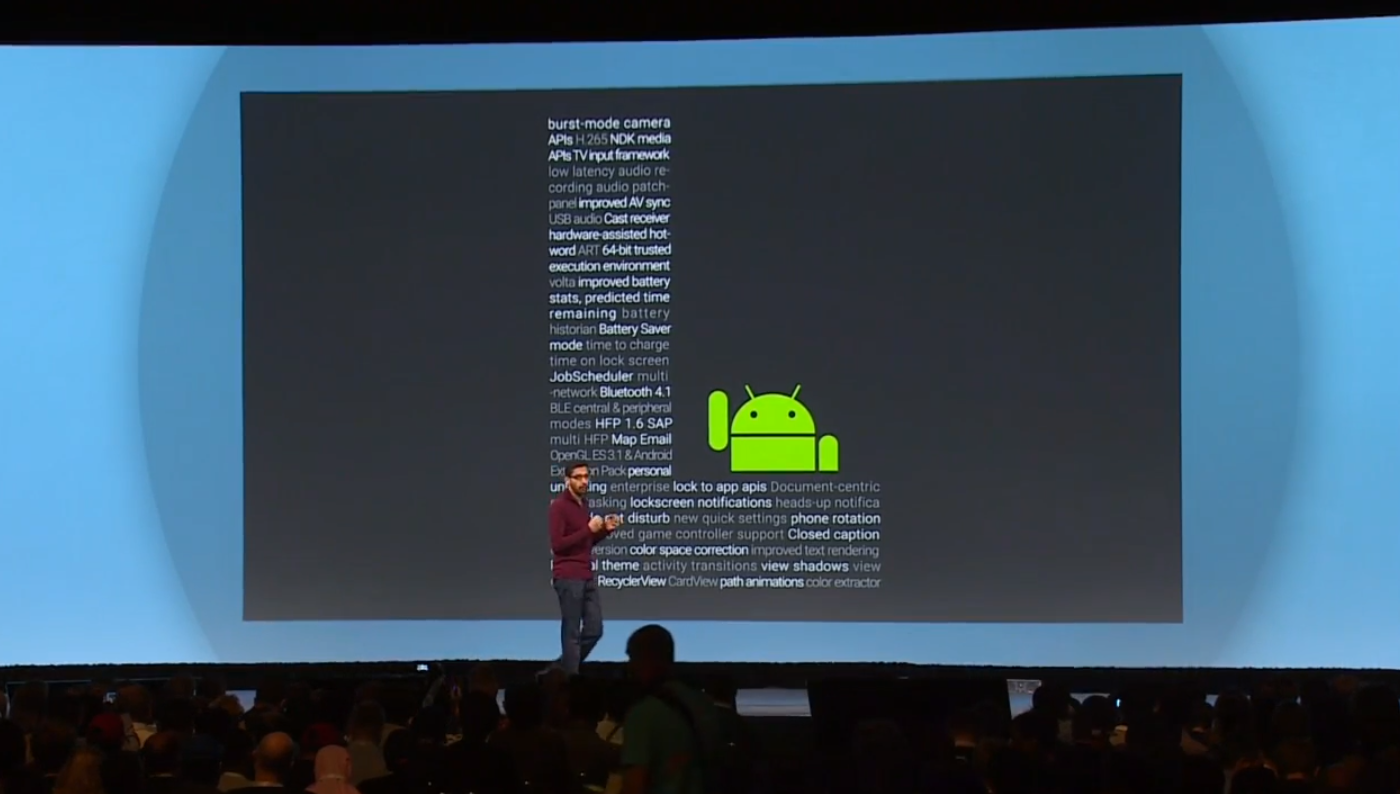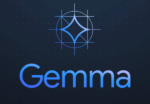Google today announced a new operating system, Android L, along with a slew of new developer features at the company’s developer conference, Google I/O.
“Over the last eight months, our team has been busy cooking up the biggest release,” said Dave Burke, engineering director for Android.
The new operating revamps its user experience, with 5,000 new APIs and a radical approach to design that will transfer over to not just phones, but tablets and other devices as well, according to Sundar Pichai, senior vice president of Android, Chrome and Google Apps.
One of the big features the Google team gave a sneak peek of is what they are calling Material Design, a design principle that responds to touch.

“Design is essential in today’s world; it defines your experiences and emotions,” said Matias Duarte, head of design for Android.
Material Design expands, reforms and reshapes digital material intelligently, he said. It will shrink, expand and provide more of a 3D look with shadows and lighting effects.
To help bring Material Design to the Web, the company is also promoting Polymer, a library that lets developers create custom interfaces, and brings new default colors, a new typography and a new grid structure to the operating system.
Android L also comes with personal unlocking. The device will use signals such as Bluetooth to determine if it is safe to open. For example, if a user has a Bluetooth watch on, the device will be able to tell he or she is the correct user and open without having to put in a passcode. If the user doesn’t have his or her watch on, the phone will then request a passcode to open the phone.
(Related: Android comes to the PC)
Notifications are also revamped in Android L. The lock screen will provide actionable notifications, allowing users to dismiss or open them. In addition, while users are in an app, actionable notifications will appear overhead so they don’t disturb what the user is doing.
The operating system also replaces the Dalvik software with Android Runtime (ART). With ART, software performance is doubled, according to Burke.
“You don’t have to make a change,” he said. “All your app code gets the performance for free.”
Android L also has improved battery life, a battery saver mode, and a restore factory settings feature, and allows developers to specify elevations for any UI element.
The developer preview of Android L will be available later today. The operating system is expected for release in the fall.
Other announcements in the keynote included:
Android One platform: This platform sets out to create affordable smartphones worldwide. It will “get the next billion people access to these devices,” according to Pichai.
Android Wear: The LG G Watch and Samsung Gear Live will be available to order later today, while Moto 360 will be available later this summer. The watches will feature voice commands, notifications, heart-rate monitors, pedometers, and seamless connection to smartphones. Support for both square and circular screens has also been added to Android Wear.
Android Auto: Android Auto is a redesign of the Android operating system aimed at cars. It is contextually aware to give users the right information at the right time such as directions and traffic. It runs on a user’s mobile device and displays it on the car’s dashboard. Users can interact with Android Auto through a touch-screen or voice commands.
Android TV: Android TV isn’t a new platform, but the company says it is now giving TVs the same level of attention as phones and tablets. Android TV will run similar to Roku and Apple TV, and will be able to provide contextual information about a user’s favorite show. The ADT1 Android TV development kit for Android TV will be available today. It will allow developers to transition existing mobile apps to Android TV. Sony, Sharp and Phillips TVs from this year will run Android TV.
The company also announced Android Auto SDK for developers. It includes APIs for audio and messaging apps so users can respond with voice comments. The company announced that, so far, more than 40 new partners have joined the Open Automotive Alliance, and more than 25 car brands have signed up to ship Android Auto.
The company is also working to make sure that all devices are always connected so users can pick up where they left off.
“[Android L is] an amazing buffet of capabilities and APIs for developers that truly expands the Google ecosystem,” said Al Hilwa, analyst at IDC. “The reach of the platform to [wearables], autos, home and TV, as well as connecting them together, really begins to show the connectedness of Android as the leading mobile platform.”






